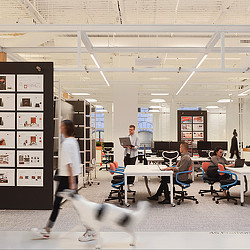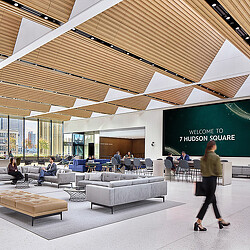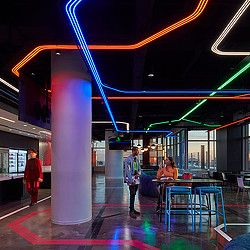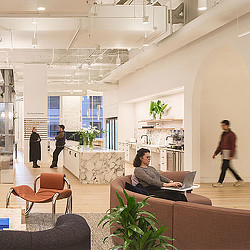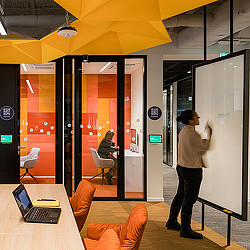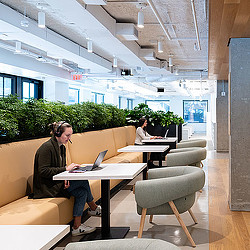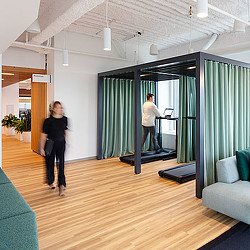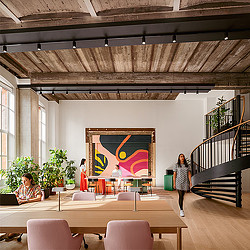Trends to Watch: How Media Workplace Priorities Have Evolved in 2024
Gensler’s latest research and project work has uncovered new ways the design of the media workplace can deliver what employees want and need in an office experience.
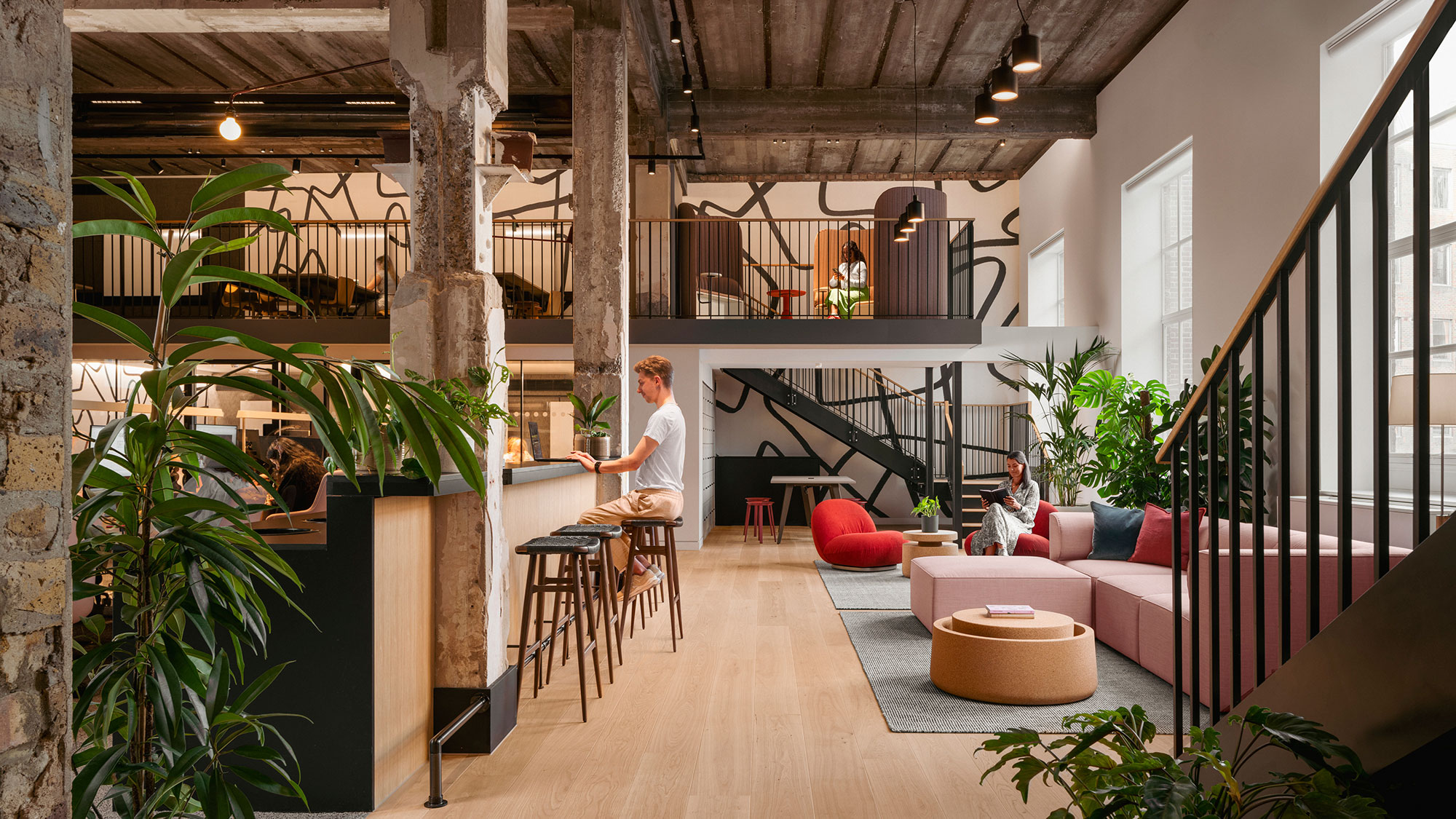
Last year, I wrote a blog about how our research and project work had uncovered four foundational ideas driving the design of the media workplace. With our new 2024 Global Workplace Survey just released, I went back to compare the findings to see what has changed and what has stayed the same when it comes to priorities for the media workplace.
A Renewed Emphasis on Individual Work
Over the past few years, our research has shown work is becoming more collaborative and less focus-oriented in the media industry. This year, we saw the percentage of time dedicated to focus work increase for the first time to 43%. While this is still well below what we saw in years past, it highlights a more balanced workstyle and reinforces a need to deliver spaces that are great for teamwork, socializing, and learning — but also must be expertly honed for individual work.
Spaces for working with others are still underrepresented in most workplaces — especially those that are more than five years old — but we also can’t swing the pendulum too far. In order to be successful, open plan spaces — which can in fact be conducive to individual work — must be complemented by an abundance of phone and huddle spaces. And while we still see media workplaces embracing open plan and often having some unassigned seating, we have seen demand for these small, enclosed spaces double in many new projects.
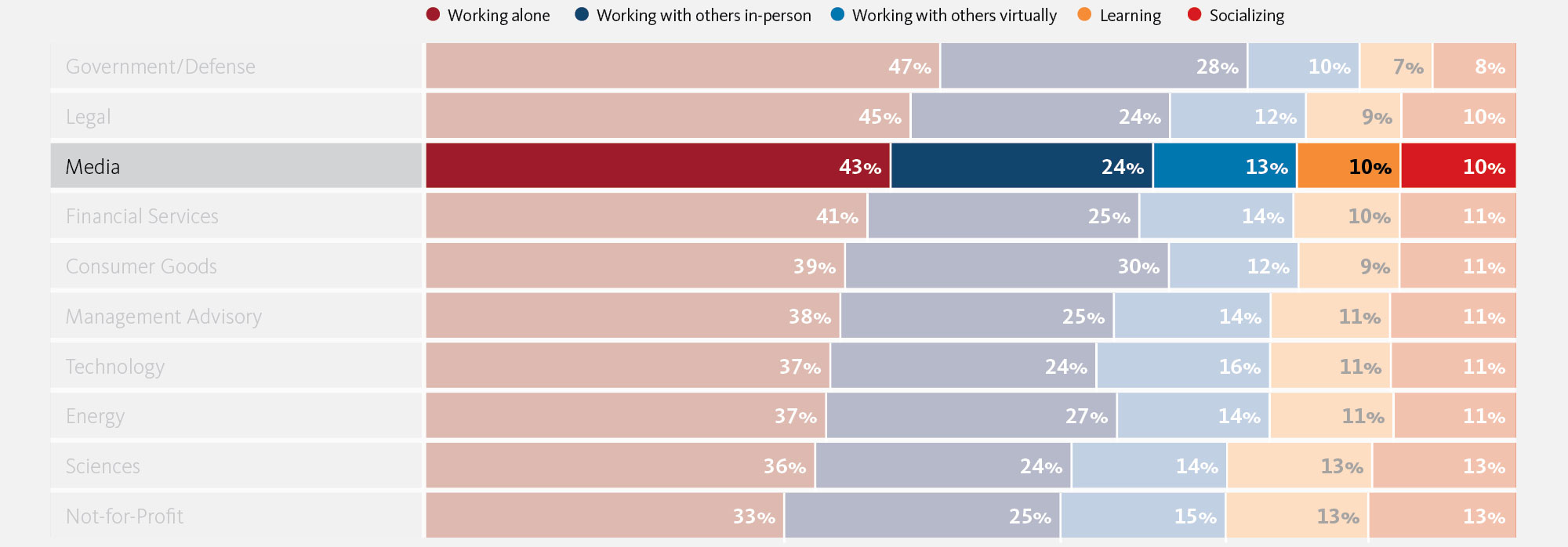
Moving Beyond Return to the Office
Media companies have shifted back to the office. For many, four days a week is the norm, whether a guideline or a strict requirement. This year, media employees report being in the office for 52% of a typical work week, up from 35% last year. This doesn’t include the time many media employees spend at non-office ‘work spaces,’ such as studios and editing facilities. What’s particularly instructive is that media employees report that to maximize their productivity, they’d ideally be in the office 15% more than they are today (67% of a typical week). So, why the gap between what they are doing and the ideal? It helps to assess whether the workplace is delivering what media employees have reported is most important in their office environments.
According to media employees surveyed, the four things the office needs to deliver on are:
- To Focus on My Work – Having the spaces and tools that enable an employee to effectively get their core tasks accomplished. (Note: this may include, but is not necessarily limited to, focus work.)
- Team Meetings – Providing a variety of spaces to meet with colleagues seamlessly. Easy-to-use, predictable technology is a given.
- Socializing With My Colleagues – Being able to access spaces that are conducive to connecting and building relationships. And, a culture that encourages personal connection and recognizes the importance of strong networks and friendships as key contributors to employee satisfaction.
- To Sit With My Team – The ability — whether in an assigned or unassigned environment — to sit next to the people you need to work with. Coming in and sitting anywhere and next to anyone defeats the purpose for many.
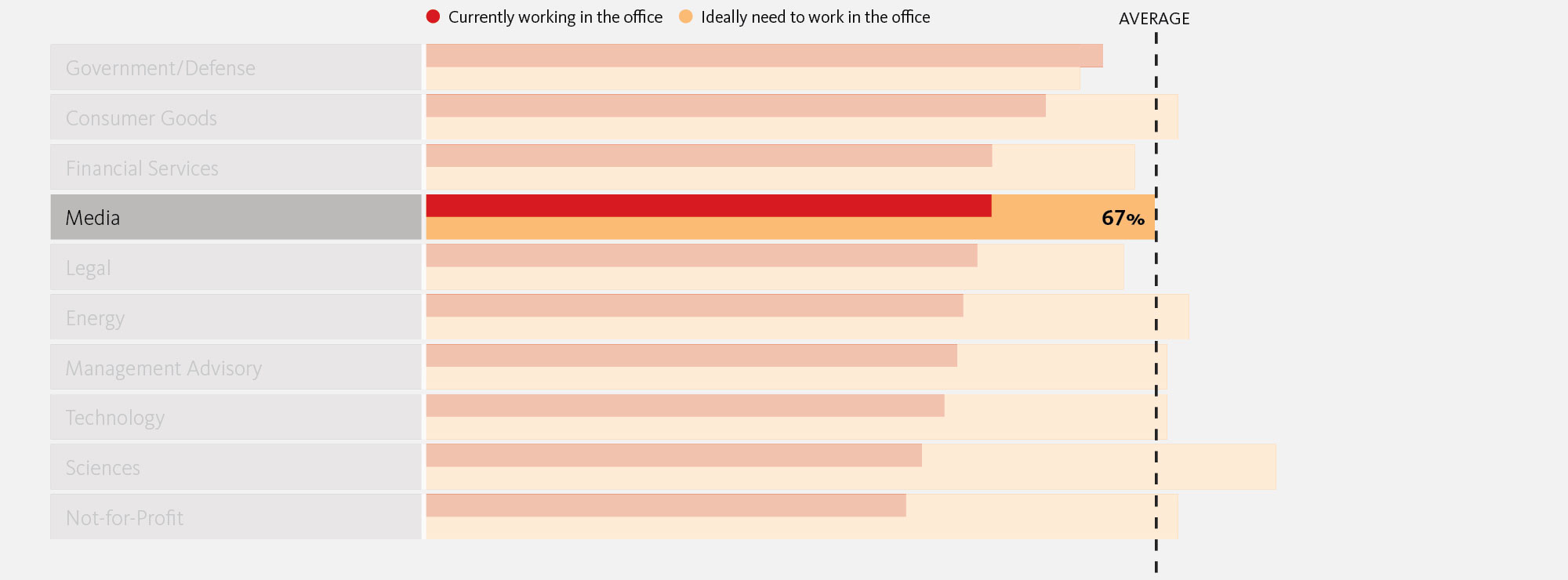
An Opportunity to Enhance the Media Workplace Experience
Media organizations captivate their fans through books, games, park experiences, film, and TV/streaming. When done right, the best media workplaces have that same impact — they deliver something their employees crave in an experience and the things they need to be effective.
Our most recent survey shows that many media workplaces — from the perspective of employees — are average when ranked on two critical factors: #1 Effectiveness — do they provide a platform for employees to deliver great work? and #2 Experience — do they provide an experience that employees, visitors, and clients value and want to be a part of?
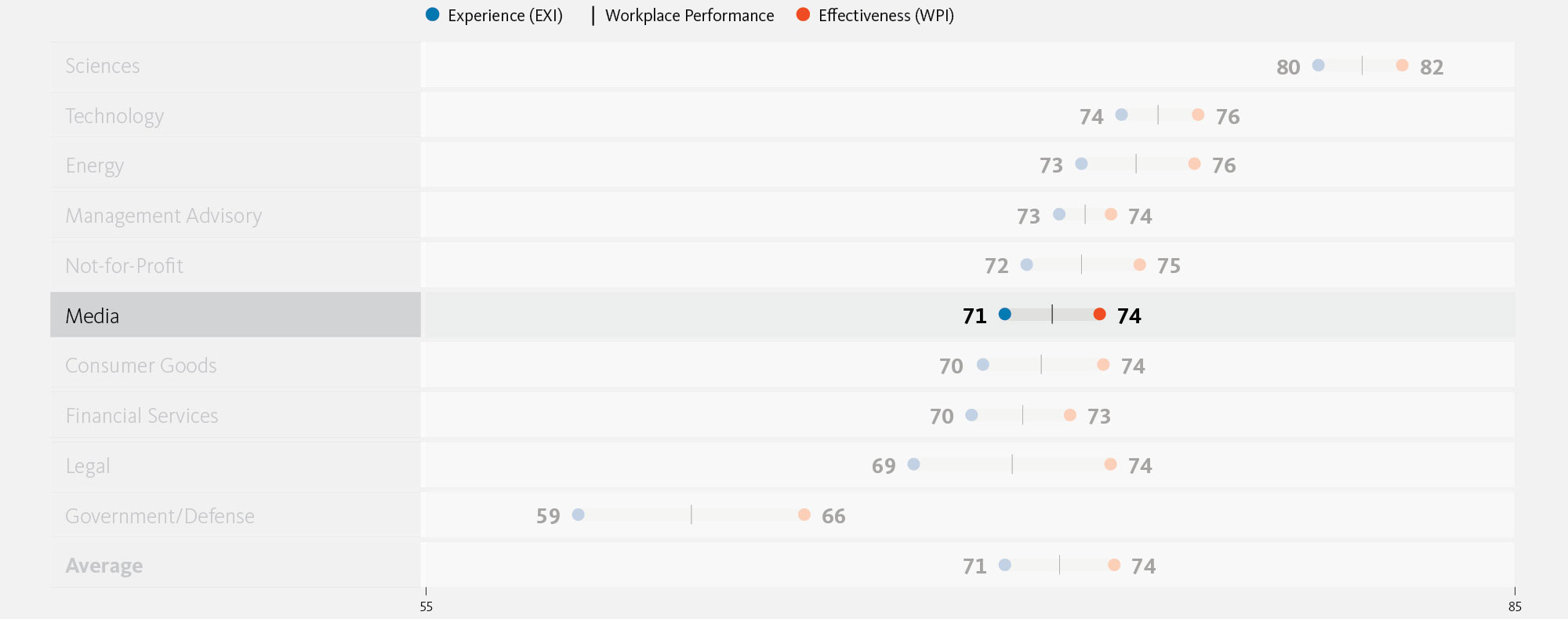
According to our 2024 Global Workplace Survey, the media industry’s performance is close to the global average. This isn’t a negative finding. But it is definitely an opportunity to look at the mix of spaces and the representation of brand, services, and technology together. This is something the tech industry — arguably media’s most direct peer industry — has excelled at. I may be biased, but I believe that media workplaces have more potential than any other industry. They should have the most passionate fans — their employees.
For media inquiries, email .

